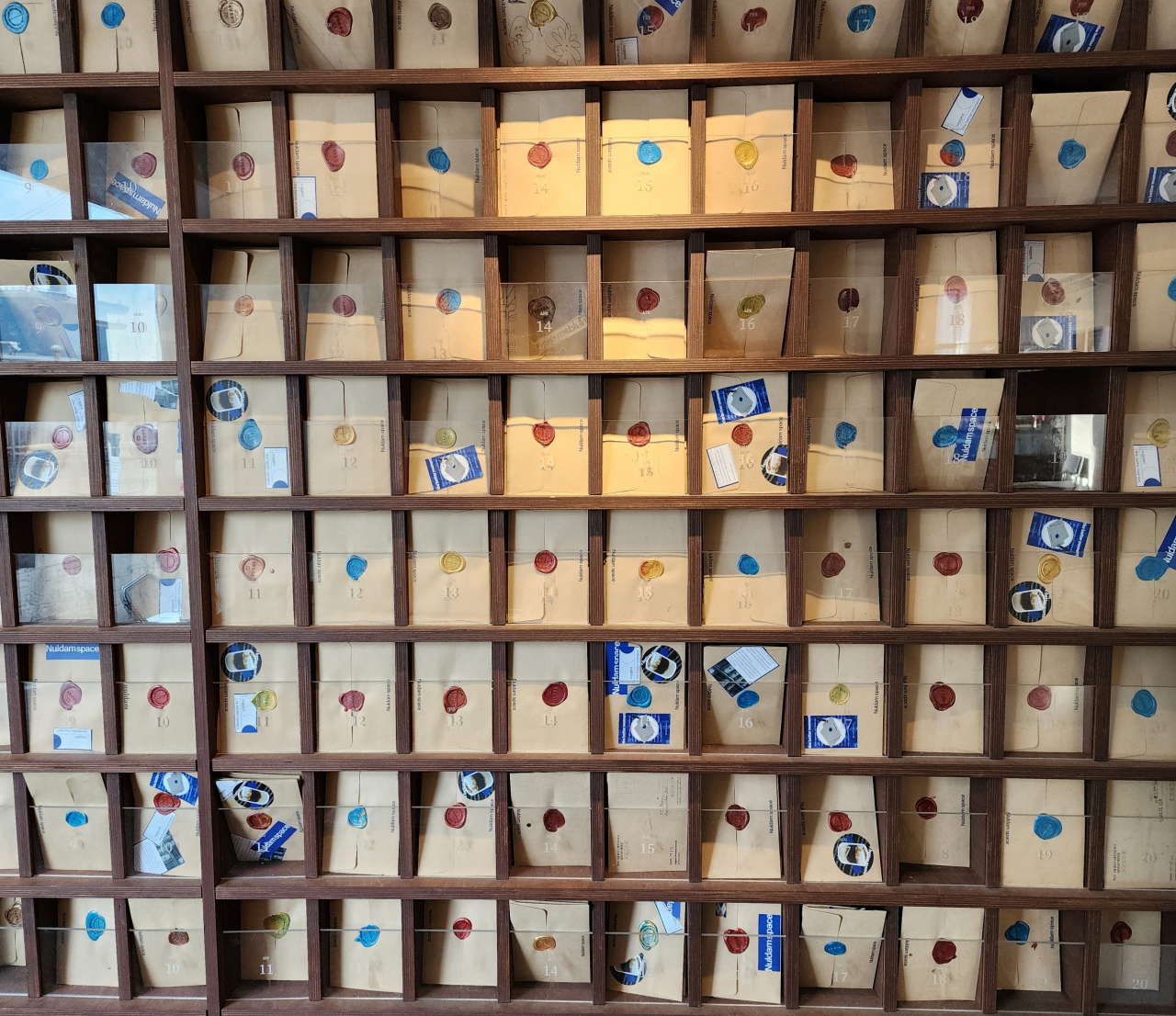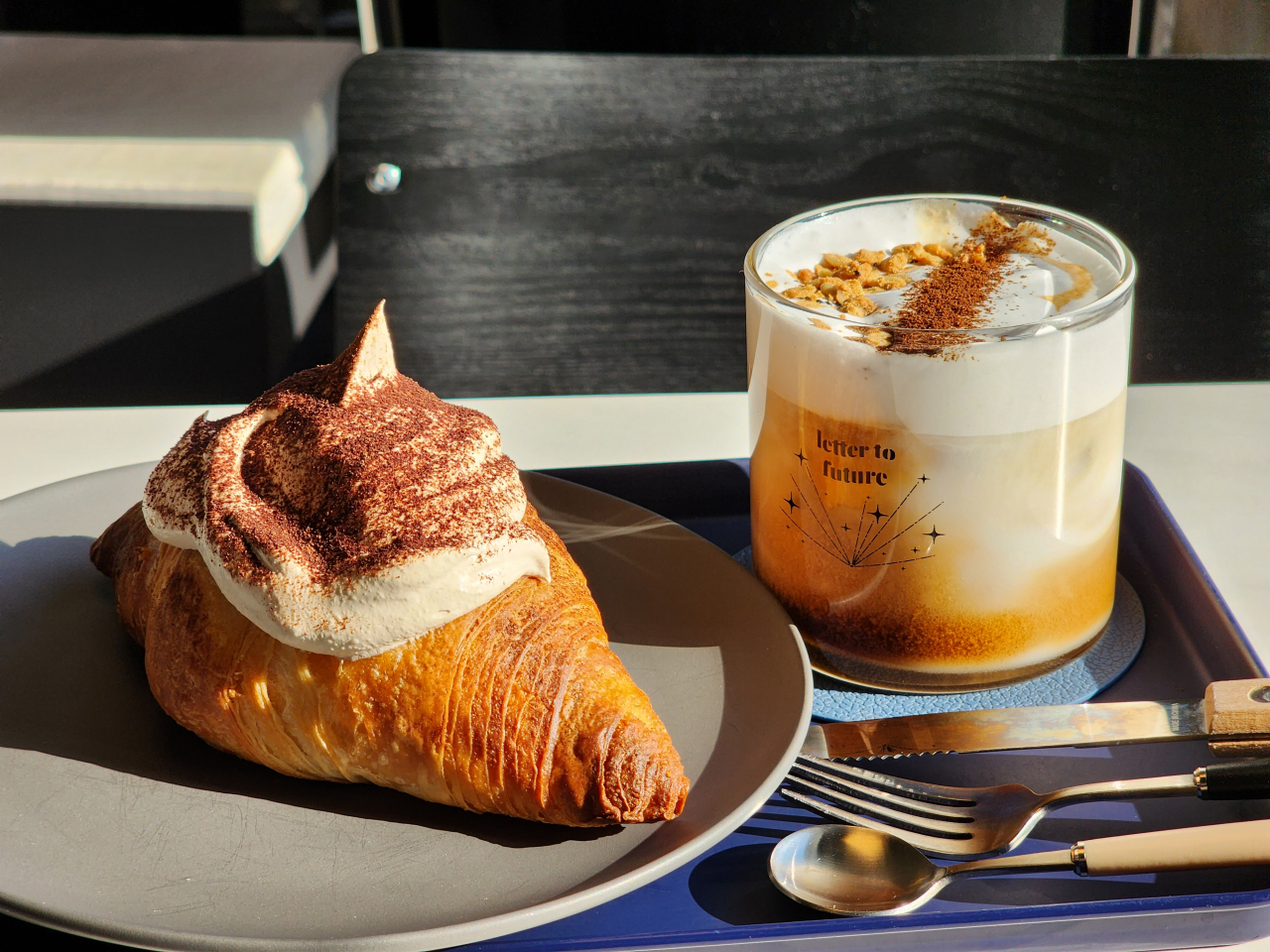

A handwritten letter is always special. There's a certain emotional resonance that digital technology cannot replicate.
A climb up the winding alleys and slopes of Haebangchon, near Haebang Church, vegan cafe Nuldam Space offers visitors a unique experience to write a letter to your future self.
The letter, which you can also opt to send to friends and family, will be delivered next year at a date of your choice. The 4,000 won letter set includes one postcard, one envelope and three pieces of sealing wax.
Complete the experience with making your own wax seal at the first floor's decorating station. Melt the wax seal over a candle for two to three minutes, then pour the melted wax onto the middle of the envelope. Count five seconds so the wax can congeal, then gently press a sealing stamp on the wax and wait around 20 seconds.
When you are done adding the finishing touches, slot the letter into one of the 365 mailboxes in the cafe. Each mailbox is labeled with a date.
The recipient will receive the letter within three or four days of the following year from the date you choose. It takes about two weeks to ship overseas.
Dates and addresses cannot be changed once submitted. For an additional fee of 2,500 won, you can track the delivery by registered mail.
All menu items at the cafe are vegan. There are two other branches, one near Gyeongbokgung in central Seoul, and the other at Hwahongmun in Suwon, Gyeonggi Province. The Haebangchon branch opens at noon and closes at 8 p.m.

Make art with kids
Renowned Korean artist Suh Do-ho invites children to create art together at Buk-Seoul Museum of Art in Nowon-gu, northern Seoul. Suh and his family have created “Artland” using children’s play clay since 2016. The pandemic has made the artist come to think more deeply about spending time with family and creating art together, according to the museum.
The exhibition “Do Ho Suh and Children” at the museum is where kids can get creative with modeling clay and build a fantasy land. Kids are encouraged to add clay onto the framework, which is made of recycled containers and clay the artist and his children created, in any way they wish.
The participants will be given about an hour to create the artwork, and will be provided with the workbook "The Wonders of Artland" written by Suh’s two children. The museum accepts walk-in participants every hour to “Artland.”
The museum has yet to decide how it would use the large-scale participatory artwork. The exhibition runs until March 12, 2023. The museum is closed Mondays.

Explore Almaty at museum
It doesn't take much effort to explore a neighboring country's history through websites, but seeing the relics through one's own eyes is an experience that may leave lasting impressions.
In celebration of the 30th anniversary of Kazakhstan-Korea diplomatic relations, an exhibition on Almaty, Kazakhstan's largest city, is running at the lobby of the Seoul Museum of History.
Organized jointly with the Museum of Almaty, the exhibition titled, "The Pearl of the Great Steppe, Almaty," presents over 100 relics and art that explains the Kazakh culture in detail, which dates back to the Turkic nomadic lifestyle.
The exhibition is laid out in a chronological order, from showcasing the ethnography and traditions of hunting culture, then moving on to showing Almaty's modern and contemporary history through archived photos.
Turkic tribes left for different parts of the world, and in ancient times, nomadic tribes of Aryans, Sakas and Huns inhabited Kazakhstan's territory.
Before the relocation of the capital to Astana in 1997, Almaty had played a central role in the country's development, from science and culture to finance. Almaty is considered a popular travel destination for tourists today, with its population exceeding 2 million.
Traditional folk crafts and household furniture of the yurt dwelling, fit for nomadic life, are shown. An array of hunting tools and everyday ware made from leather, wood and animal bones are on display.
The museum is closed Mondays. Admission is free.





